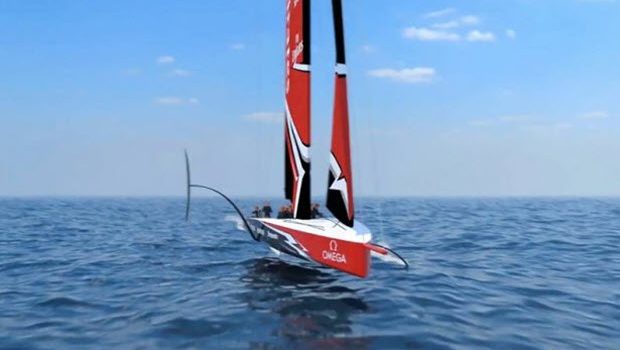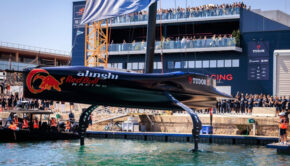On the Foiling Frontier
Published on October 16th, 2018
The AC75 Rule for the 36th America’s Cup presents a unique challenge for design teams. Scott Ferguson details the situation for Sailing World.
The America’s Cup is about high-performance sailing and cutting-edge design and technology. Today, it must also embrace the elevated skill level required to sail such high-performance craft. Match racing, which is the Cup’s traditional format, is a discipline that adapts to the type of boat being used for the competition.
Dial-ups, slam dunks and tacking duels have evolved, and the same thing will happen with the AC75. New moves will be coined in the years to come, and certain maneuvers will be equally, if not more, difficult to execute. Youth and athleticism are required to sail the latest America’s Cup machines, but ultimately, the success of each effort begins with the design and construction of the platform itself.
One of the first steps an America’s Cup team will take when drilling into a new design rule is to paint a rough picture of what the rule intends, which requires extensive drawings and comparisons. The second step involves creating a base-line hull, appendage and sail plan for input into a proprietary velocity-prediction program. A good VPP can give clear indications for what variations within a design rule are worth exploring with regard to performance.
The VPP requires a tremendous amount of input and accurate data to support the optimization process. It will be one of the central clearinghouses for design ideas and what-ifs for the AC75, but it also serves as the backbone for race models and race simulators that introduce a heap of additional variables. Many questions can be answered with a combination of these tools, but reality often brings unexpected results, and many lessons can be learned by building something real.
The base-line design will evolve as quickly as teams receive results, and design iterations will continue until build deadlines. With any new boat design, and especially in a new class, no one area can be ignored because there is no status quo to fall back to. There is a lot of work ahead, for challengers and defender alike, but the two previous America’s Cup catamaran classes — the AC72 and the AC50 — are good benchmarks to begin comparing the overall design traits of the AC75. – Full story









 We’ll keep your information safe.
We’ll keep your information safe.